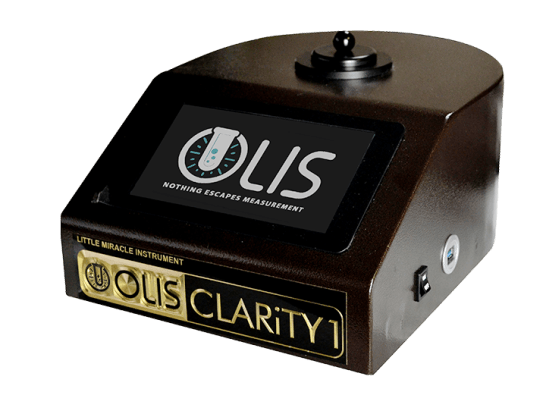The Basic Principles Of Spectrophotometers
Table of ContentsFacts About Spectrophotometers RevealedThe 20-Second Trick For Circularly Polarized LuminescenceSee This Report about Circularly Polarized LuminescenceThe Main Principles Of Spectrophotometers A Biased View of Circular Dichroism

Spectrophotometry is a tool that hinges on the quantitative analysis of molecules depending on how much light is taken in by colored substances.
The Buzz on Uv/vis
A spectrophotometer is frequently utilized for the measurement of transmittance or reflectance of options, transparent or opaque solids, such as sleek glass, or gases. Although many biochemicals are colored, as in, they take in visible light and therefore can be determined by colorimetric treatments, even colorless biochemicals can often be transformed to colored compounds ideal for chromogenic color-forming reactions to yield compounds appropriate for colorimetric analysis.: 65 However, they can also be developed to measure the diffusivity on any of the listed light varieties that generally cover around 2002500 nm utilizing different controls and calibrations.
An example of an experiment in which spectrophotometry is used is the determination of the stability constant of an option. A particular chain reaction within an option might happen in a forward and reverse direction, where reactants form products and items break down into reactants. Eventually, this chain reaction will reach a point of balance called a stability point.
The Of Circularly Polarized Luminescence
The amount of light that travels through the option is a sign of the concentration of specific chemicals that do not permit light to travel through. The absorption of light is due to the interaction of light with the electronic and vibrational modes of molecules. Each type of particle has an individual set of energy levels connected with the makeup of its chemical bonds and nuclei and hence will take in light of specific wavelengths, or energies, resulting in special spectral homes.
The usage of Our site spectrophotometers spans numerous scientific fields, such as physics, materials science, chemistry, biochemistry. circular dichroism, chemical engineering, and molecular biology. They are commonly utilized in lots of industries consisting of semiconductors, laser and optical production, printing and forensic examination, as well as in laboratories for the study of chemical substances. Spectrophotometry is often used in measurements of enzyme activities, decisions of protein concentrations, determinations of enzymatic kinetic constants, and measurements of ligand binding reactions.: 65 Ultimately, a spectrophotometer is able to figure out, depending on the control or calibration, what compounds exist in a target and precisely just how much through calculations of observed wavelengths.
This would come as a service to the formerly created spectrophotometers which were not able to soak up the ultraviolet correctly.
Some Of Circular Dichroism
It would be found that this did not offer acceptable outcomes, for that reason in Model B, there was a shift from a glass to a quartz prism which enabled better absorbance outcomes - circular dichroism (https://www.startus.cc/company/olis-clarity). From there, Design C was born with a change to the wavelength resolution which ended up having 3 systems of it produced
It irradiates the sample with polychromatic light which the sample absorbs depending on its properties. It is sent back by grating the photodiode array which detects the wavelength region of the spectrum. Ever since, the development and application of spectrophotometry gadgets has increased immensely and has actually turned into one of the most innovative instruments of our time.

The Basic Principles Of Circularly Polarized Luminescence
The grating can either be movable or repaired.
In such systems, the grating is repaired and the intensity of each wavelength of light is measured by a various detector in the selection. When making transmission measurements, the spectrophotometer quantitatively compares the portion of light that passes through a recommendation service and a test solution, then electronically compares the intensities of the 2 signals and calculates the portion of transmission of the sample compared to the referral standard.
